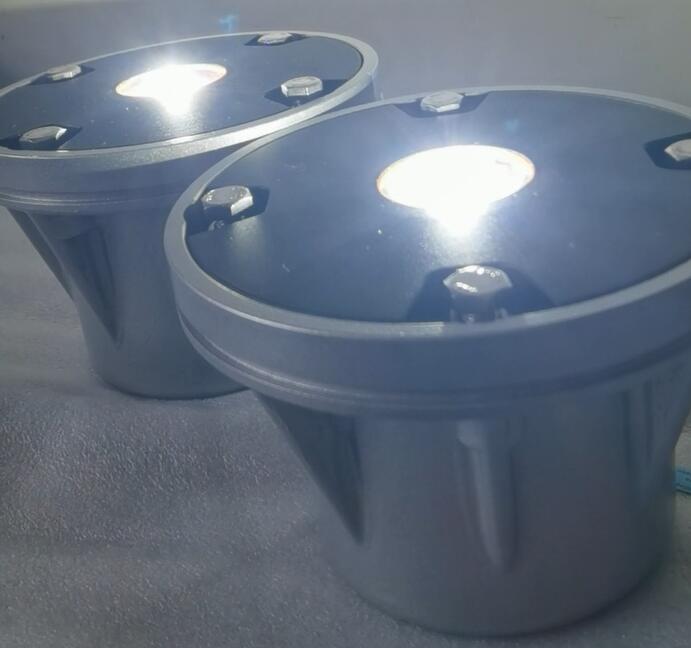In the world of aviation, ensuring visibility and safety during critical phases of flight is paramount. Aviation LED landing lights have emerged as a game-changing solution, offering unparalleled brightness, energy efficiency, and durability. These lights have quickly become the preferred choice for both general aviation and commercial aircraft, reflecting the industry's shift toward advanced technology and sustainability.
The Evolution of Aviation LED Landing Lights
Traditional landing lights relied on incandescent or halogen bulbs, which, while functional, came with significant drawbacks. These older technologies consumed more power, generated excessive heat, and required frequent replacements due to shorter lifespans. The introduction of LED (Light Emitting Diode) technology has addressed these challenges, transforming the way aircraft lighting systems operate.
Aviation LED landing lights provide superior illumination, ensuring pilots have a clear view of the runway during landings and takeoffs. The concentrated, bright beam of LED lights enhances visibility even in low-light or adverse weather conditions, significantly improving flight safety.

Key Features of Aviation LED Landing Lights
Energy Efficiency:
LED technology is renowned for its low power consumption. Aviation LED landing lights draw less energy from the aircraft’s electrical system, reducing fuel consumption and operational costs.
Longevity:
The lifespan of LED lights far exceeds that of traditional bulbs. Most aviation LED landing lights can operate for tens of thousands of hours, reducing the need for frequent replacements and minimizing maintenance costs.
| Aviation LED landing lights |
| Aviation LED landing light |
Durability:
Built to withstand extreme conditions, aviation LED landing lights are resistant to vibration, shock, and temperature fluctuations. Their robust construction ensures reliable performance even in demanding environments.
Enhanced Visibility:
LED lights produce a brighter and more focused beam compared to traditional lighting solutions. This increased brightness and clarity improve runway visibility, allowing pilots to operate with greater confidence and precision.
Eco-Friendly:
By consuming less energy and lasting longer, aviation LED landing lights contribute to reduced carbon emissions. Their environmentally friendly design aligns with the aviation industry's goals for sustainability.
Applications in Modern Aviation
Aviation LED landing lights are utilized across various aircraft types, including general aviation planes, helicopters, and large commercial airliners. Their versatility and adaptability make them suitable for multiple applications:
Runway Illumination: Enhancing the visibility of runways and taxiways during landings and takeoffs.
Recognition Lights: Increasing aircraft visibility to other pilots and ground personnel.
Emergency Lighting: Providing reliable illumination during critical situations.
The adaptability of aviation LED landing lights extends beyond aircraft usage. They are also used in ground support equipment and airport infrastructure, further demonstrating their utility.
Technological Advancements in Aviation LED Landing Lights
Modern aviation LED landing lights are more than just a lighting source. Advancements in technology have led to the development of smart lighting systems that integrate seamlessly with the aircraft’s avionics. Features such as adjustable brightness levels, strobing patterns, and real-time performance monitoring have enhanced their functionality and reliability.
Additionally, the introduction of modular designs has made installation and replacement more straightforward, reducing downtime during maintenance. These innovations are particularly valuable for fleet operators, where efficiency and reliability are critical.
Challenges and Considerations
While aviation LED landing lights offer numerous benefits, there are challenges to address. The initial cost of LED lights is higher compared to traditional options, which may deter some operators from making the switch. However, the long-term savings in energy and maintenance costs often outweigh the upfront investment.
Another consideration is the compatibility of LED lights with existing aircraft systems. Ensuring that the lights meet regulatory standards and integrate seamlessly with an aircraft’s electrical system is crucial for safe and effective operation.
Future Prospects
The future of aviation LED landing lights is bright, with continuous innovations driving their adoption. As LED technology advances, we can expect even greater energy efficiency, improved light output, and enhanced smart features. These improvements will further solidify their position as an essential component of modern aviation.
Moreover, the global push for sustainability in aviation is likely to accelerate the transition to LED lighting solutions. Governments and industry stakeholders are increasingly prioritizing eco-friendly technologies, making aviation LED landing lights a key player in achieving these goals.
Aviation LED landing lights represent a significant leap forward in aviation technology. Their unmatched performance, durability, and energy efficiency make them an indispensable tool for pilots and operators alike. As the aviation industry continues to evolve, these lights will play a crucial role in enhancing safety, reducing environmental impact, and shaping the future of flight.